White spots on rose leaves can be a common problem for gardeners. These spots can be caused by a variety of factors, including fungal diseases, pests, and viruses. If left untreated, they can weaken the plant and even cause it to die.
Understanding the problem is the first step in effectively treating and preventing white spots on rose leaves. Gardeners should be aware of the common causes of white spots, such as powdery mildew, aphids, anthracnose, and the mosaic virus.
By identifying the cause, gardeners can choose the most effective treatment method and prevent the problem from recurring in the future.
Symptoms to look out for include white spots on the leaves, stems, and flower stalks, as well as distorted growth and yellowing leaves. Effective treatment methods include using fungicides, pruning infected areas, and removing infected plants to prevent the spread of disease.
Prevention strategies include maintaining good garden hygiene, choosing disease-resistant varieties, and providing proper care for the plant.
Key Takeaways on White Spots on Rose Bush Leaves
- Understanding the common causes of white spots on rose leaves is crucial for effective treatment and prevention.
- Symptoms to look out for include white spots on leaves, distorted growth, and yellowing leaves.
- Effective treatment methods include using fungicides, pruning infected areas, and removing infected plants, while prevention strategies include maintaining good garden hygiene and choosing disease-resistant varieties.
Also don’t miss:
- Pumpkin Leaves with White Spots
- Plants Having Green Leaves with White Spots
- Orchid Leaves White Spots
Understanding the Problem
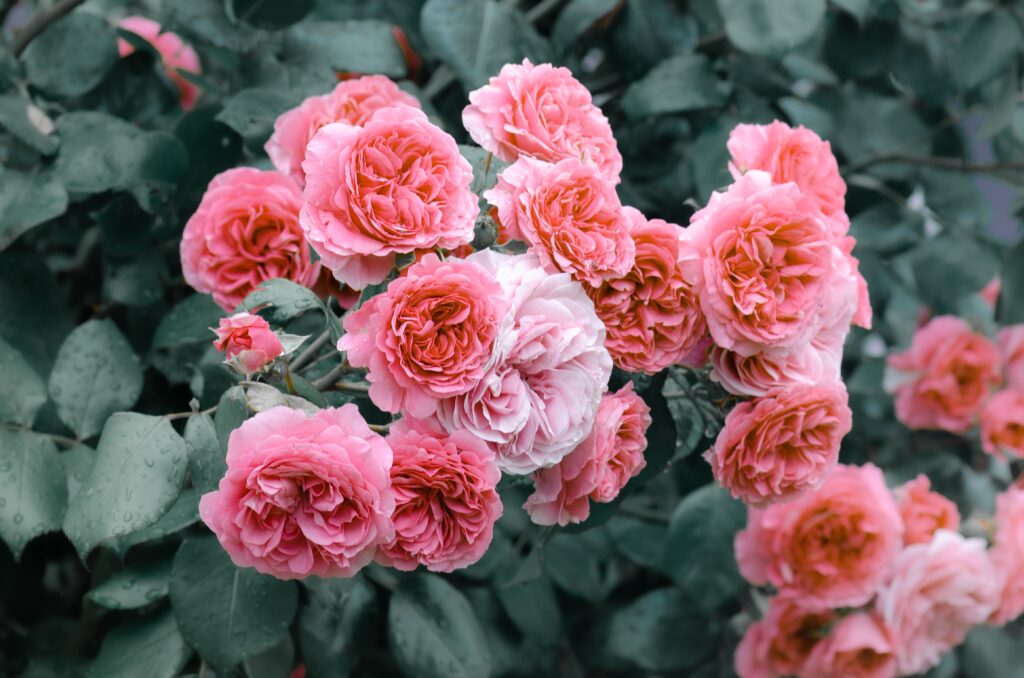
White spots on rose leaves are a common problem that can affect the health and beauty of rose bushes. These spots can be caused by a variety of factors, including fungal diseases and pests. The most common fungal disease that causes white spots on rose leaves is powdery mildew, caused by the fungus Podosphaera pannosa.
This fungus affects all parts of the plant, including leaves, stems, flower stalks, and even petals. The white spots produced by this fungus can spread like a disease between plants, producing spores that can infect other roses.
Another fungal disease that can cause white spots on rose leaves is anthracnose, caused by the fungus Diplocarpon rosae. This disease can cause black spots on leaves, stems, and flowers, as well as white spots that can eventually turn brown.
If left untreated, anthracnose can cause the leaves to fall off, weakening the plant and making it more susceptible to other diseases.
In addition to fungal diseases, white spots on rose leaves can also be caused by pests, such as aphids. These insects feed on the sap of the plant, causing damage to the leaves and leaving behind a sticky residue. Over time, this damage can weaken the plant and make it more susceptible to other diseases.
To prevent and treat white spots on rose leaves, it is important to monitor plants regularly for signs of disease or pests.
This can include inspecting leaves, buds, and stems for symptoms such as spotting, blackening, sticky residue, holes in leaves, and leaf yellowing or distortion. Early detection and treatment can help prevent the spread of disease and ensure the health and beauty of rose bushes.
Rose Bush White Spots on Leaves – 3 Common Problems
White spots on rose leaves can be caused by various factors. In this section, we will look at the most common causes of white spots on rose leaves and how to identify them.
1. Fungal Infections
One of the most common causes of white spots on rose leaves is fungal infections. Powdery mildew is a fungal infection that can cause white spots on rose leaves.
It is caused by the fungus Podosphaera pannosa and can spread rapidly between plants. Powdery mildew usually appears on the upper surface of leaves, stems, flower stalks, and even petals. It thrives in humid environments with poor air circulation.
2. Insect Infestations
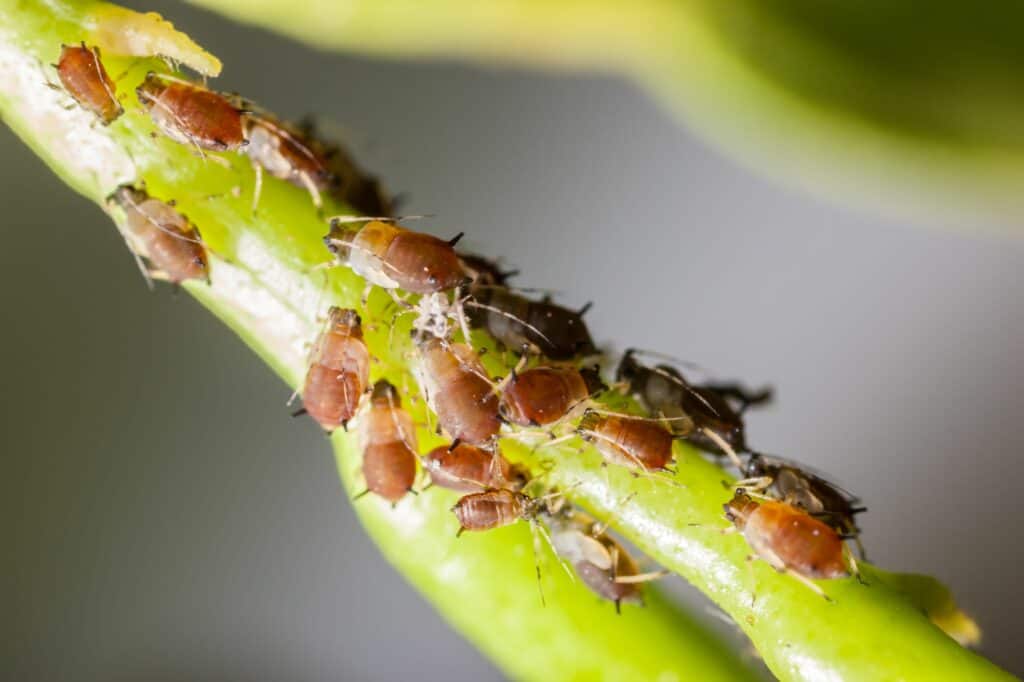
Insects can also cause white spots on rose leaves. Aphids, leafhoppers, scale insects, spider mites, and mealybugs are common pests that can cause white spots on rose leaves.
These insects feed on the sap of the plant, causing damage to the leaves. They also excrete a sticky substance called honeydew, which can attract fungal infections.
3. Environmental Factors
Environmental factors can also cause white spots on rose leaves. Humidity, air circulation, and sunlight are important factors that affect the health of rose plants. High humidity and poor air circulation can create a favorable environment for fungal infections.
On the other hand, full sun and warm days can help prevent fungal infections.
Watering and soil also play a role in the health of rose plants. Overwatering can lead to root rot, which can cause white spots on leaves. In addition, an alkaline environment can cause nutrient deficiencies, which can make the plant more susceptible to fungal infections.
Symptoms to Look Out For
If you notice white spots on the leaves of your rose bush, it could be a sign of a problem. However, there are other symptoms to look out for as well.
Leaf Symptoms
White spots on rose leaves are usually a sign of powdery mildew, which is a fungal disease. This disease appears as a white powdery coating on the leaves, stems, and buds of the plant.
In addition to white spots, powdery mildew can cause leaves to curl up and become distorted. If left untreated, powdery mildew can weaken the plant and cause it to stop producing flowers.
Other leaf symptoms to look out for include yellow or tan spots on the leaves, holes in the leaves, and black or brown spots on the leaves. These symptoms can be caused by a variety of problems, including aphids, spider mites, and fungal diseases.
Stem and Flower Symptoms
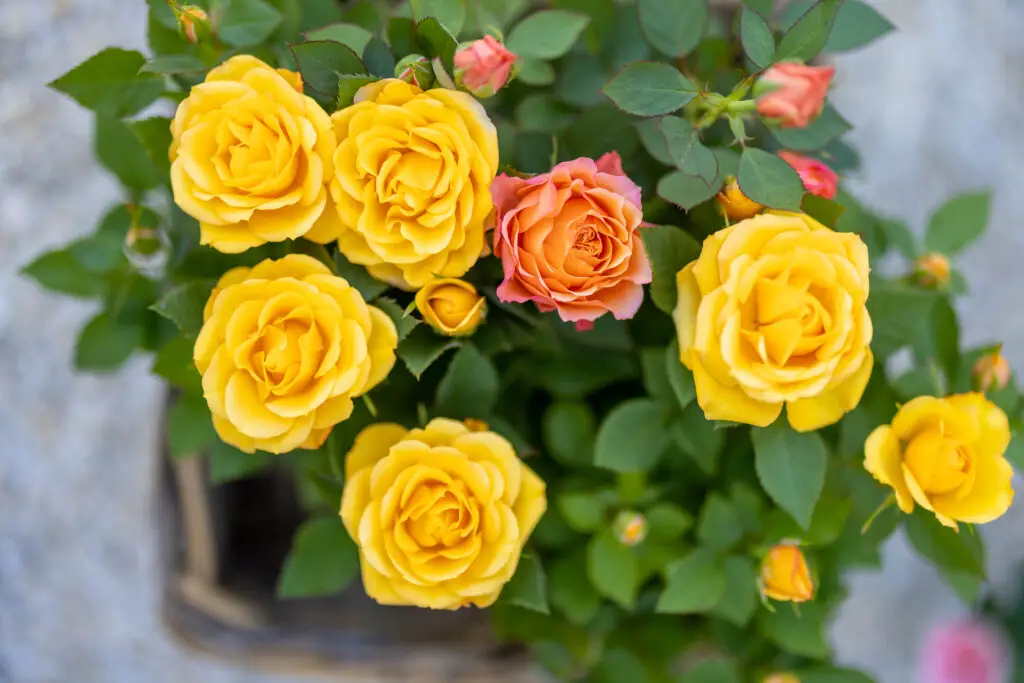
In addition to leaf symptoms, there are also stem and flower symptoms to look out for. Stem symptoms include cankers, which are sunken areas on the stem that may ooze sap. Cankers can be caused by fungal diseases or by physical damage to the stem.
Flower symptoms include petals that are discolored, wilted, or have spots on them. This can be a sign of a fungal disease or of physical damage to the flower. Flower stalks can also be affected by fungal diseases or physical damage, causing them to become discolored or to wilt.
It is important to monitor your rose bush regularly for any symptoms of disease or damage. Early detection and treatment can help prevent the problem from spreading and can help keep your rose bush healthy and blooming.
Effective Treatment Methods
White spots on rose leaves can be treated effectively using various methods. These methods include using fungicides, insecticide application, and home remedies.
Using Fungicides
Fungicides are an effective way to treat white spots on rose leaves caused by fungal infections. These infections include powdery mildew and anthracnose. Fungicides can be applied as a spray or a dust, depending on the product. It is important to read the label and follow the instructions carefully when using fungicides.
Some common fungicides used to treat white spots on rose leaves include neem oil fungicide, horticultural oil, and sulfur-based fungicides. Neem oil fungicide is effective against powdery mildew and other fungal infections.
Horticultural oil is used to control fungal infections and insect infestations. Sulfur-based fungicides are used to control powdery mildew and other fungal infections.
Insecticide Application
Insecticide application is another effective way to treat white spots on rose leaves caused by insect infestations. Insecticides can be applied as a spray or a dust, depending on the product. It is important to read the label and follow the instructions carefully when using insecticides.
Some common insecticides used to treat white spots on rose leaves include neem oil, dish soap, and rubbing alcohol. Neem oil is effective against aphids and other insect infestations. Dish soap can be used to control aphids and other soft-bodied insects. Rubbing alcohol is effective against spider mites and other small insects.
Home Remedies

Home remedies can also be used to treat white spots on rose leaves. These remedies include using baking soda solution, neem or horticultural oil, and dish soap. Baking soda solution can be used to control powdery mildew and other fungal infections.
Neem or horticultural oil can be used to control fungal infections and insect infestations. Dish soap can be used to control aphids and other soft-bodied insects.
Prevention Strategies
Preventing white spots on rose leaves requires proper care and maintenance of the plants. Creating a healthy environment for the roses is also essential to prevent the occurrence of white spots. Here are some strategies to prevent white spots on rose leaves.
Proper Care and Maintenance
Proper care and maintenance of rose bushes can help prevent white spots on leaves. Pruning is an essential part of rose care, and it can help prevent the spread of diseases.
Prune the rose bushes in the early spring before new growth appears. Remove any dead, diseased, or damaged wood. Dispose of the infected leaves and debris away from the garden to prevent the spread of the disease.
Sunlight is essential for the growth of roses. Plant the rose bushes in an area that receives full sun for at least six hours a day. Adequate sunlight will help prevent the occurrence of white spots on the leaves.
Watering the rose bushes properly is also essential. Water the roses at the base of the plant and avoid getting the leaves wet. Overwatering can cause the leaves to become susceptible to fungal diseases. Provide adequate airflow around the plant to help prevent the occurrence of white spots.
Creating a Healthy Environment
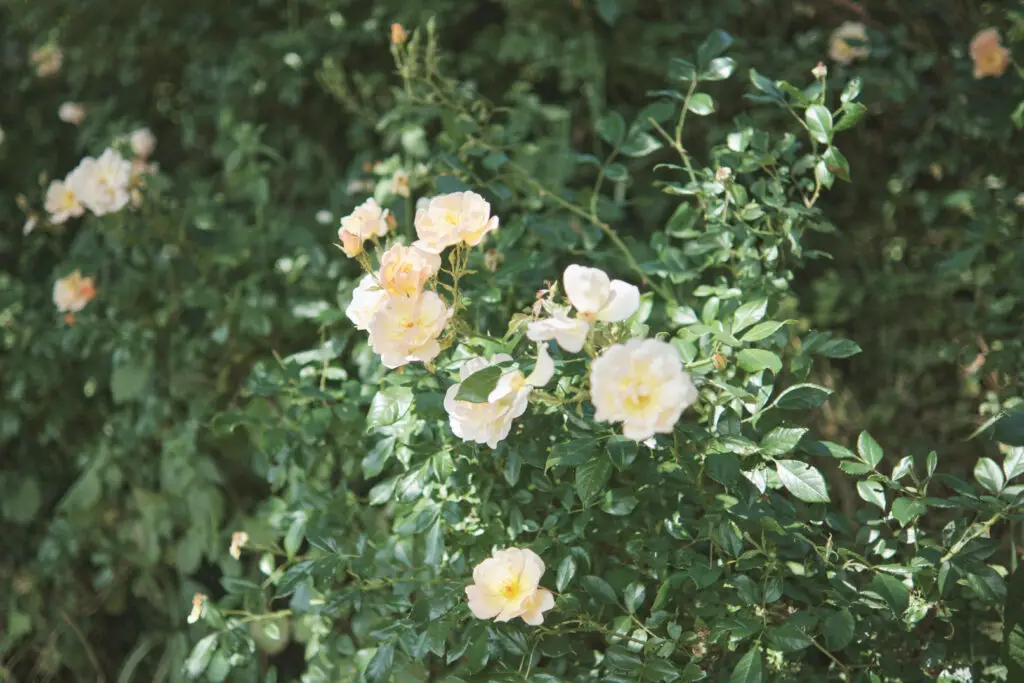
Creating a healthy environment for the roses can help prevent the occurrence of white spots on leaves. The soil should be well-draining and rich in nutrients. Add organic matter to the soil to improve its quality. Mulch around the base of the plant to help retain moisture and prevent weeds.
Overwintering rose bushes is essential to prevent the occurrence of white spots on leaves. In colder climates, protect the rose bushes by adding a layer of mulch around the base of the plant. This will help insulate the roots and protect them from freezing temperatures.
Impact on Garden Ecosystem
White spots on rose leaves can have a significant impact on the garden ecosystem. The white spots are usually caused by fungal diseases such as powdery mildew, which can spread to other plants in the garden. This can lead to a decrease in the overall health of the garden, affecting the growth and productivity of other plants.
Effect on Pollinators
The presence of white spots on rose leaves can also affect pollinators such as bees, butterflies, and birds. These insects and animals rely on the nectar and pollen produced by flowering plants to survive.
When the health of the plants is compromised due to fungal diseases, the quality and quantity of nectar and pollen can be affected, leading to a decrease in the number of pollinators in the garden.
Impact on Other Plants
Fungal diseases such as powdery mildew can also affect other plants in the garden. The spores from infected rose leaves can spread to other plants, leading to the development of white spots on their leaves as well.
This can lead to a decrease in the overall health and productivity of the garden, affecting the growth of vegetables and other flowering plants.
To prevent the spread of fungal diseases, it is important to remove infected leaves and dispose of them properly. Regularly inspecting the garden for signs of fungal diseases and taking appropriate measures to control their spread can help maintain the health of the garden ecosystem.
Recovery and Replanting
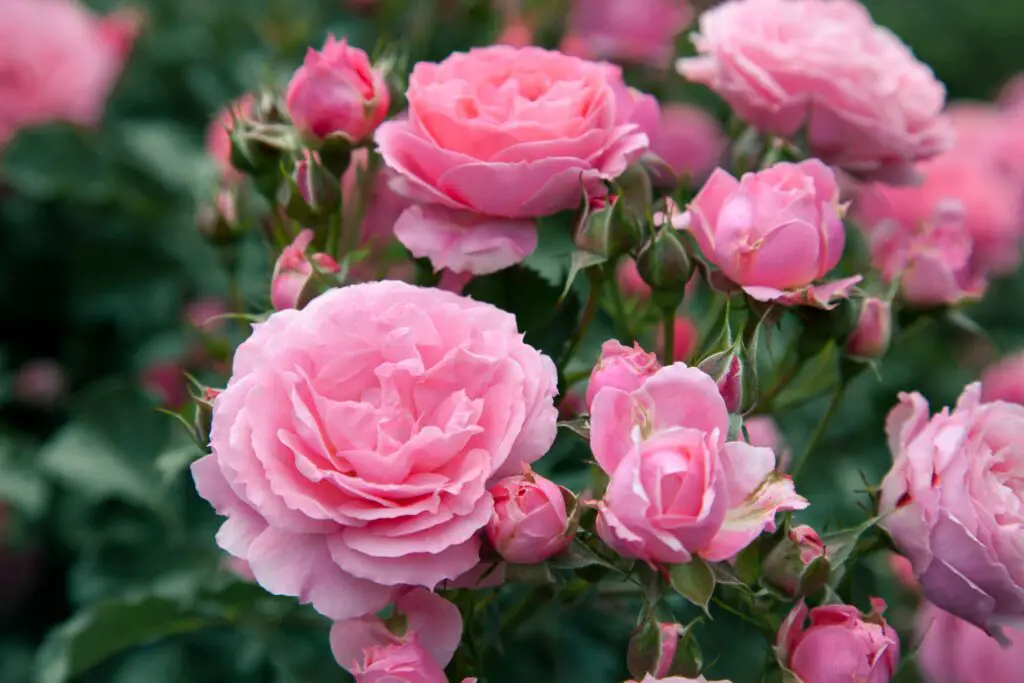
If a rose bush has been affected by white spots on its leaves, it is possible to recover it and get it blooming again. Recovery and replanting will require some effort and care, but it is worth it to save the plant.
First, it is important to remove all the affected leaves and dispose of them properly. This will prevent the spread of the disease to other plants in the garden. Next, the rose bush should be pruned to remove any dead or damaged wood. This will help the plant focus its energy on new growth.
To encourage new growth and blooming, the rose bush should be fertilized with a balanced fertilizer. It is also important to water the plant deeply and regularly to support its recovery. Climbing roses may need additional support to prevent them from falling over.
When replanting the rose bush, it is important to choose a location that receives plenty of sunlight and has good air circulation. The soil should be well-draining and rich in organic matter. It is also a good idea to add some mycorrhizal fungi to the soil to help the plant establish itself.
With proper care and attention, a rose bush can recover from white spots on its leaves and continue to bloom and thrive in the garden.
Frequently Asked Questions
How do you treat powdery mildew on roses?
Powdery mildew is a fungal disease that can affect roses, causing white spots on the leaves. To treat powdery mildew on roses, it is important to remove any infected leaves and dispose of them properly.
Fungicides can also be used to control the spread of the disease. In addition, it is important to ensure that the roses are well-ventilated and not overcrowded, as this can contribute to the spread of powdery mildew.
What are the symptoms of rose powdery mildew?
The symptoms of rose powdery mildew include white or grayish spots on the leaves, stems, and flowers of the rose bush. The spots may become larger and more numerous over time, and the leaves may eventually become distorted or discolored. In severe cases, the leaves may drop from the plant prematurely.
What causes white spots on rose leaves?
White spots on rose leaves can be caused by a variety of factors, including fungal diseases like powdery mildew, insect infestations, and environmental stressors like heat or drought. Identifying the cause of the white spots is important in determining the best course of treatment.
How do you get rid of white spots on rose bushes?
The best way to get rid of white spots on rose bushes depends on the cause of the spots. If the spots are caused by a fungal disease like powdery mildew, fungicides can be used to control the spread of the disease.
If the spots are caused by an insect infestation, insecticides can be used to eliminate the pests. In addition, it is important to ensure that the roses are well-maintained and not stressed, as this can make them more susceptible to disease and pests.
What are the white eggs on rose leaves?
The white eggs on rose leaves may be the eggs of an insect like a lacewing or ladybug, which are beneficial insects that can help control pests like aphids.
Alternatively, the eggs may be the eggs of a pest like a spider mite or mealybug, which can cause damage to the rose bush. It is important to identify the eggs and take appropriate action to control the pest population.
What are the white spots and holes on knockout rose leaves?
White spots and holes on knockout rose leaves may be caused by a fungal disease like black spot, which can cause the leaves to become spotted and eventually drop from the plant.
Insect infestations like sawflies or aphids can also cause holes in the leaves. It is important to identify the cause of the damage and take appropriate action to control the spread of the disease or eliminate the pests.

Hey, I’m Lisa and I’ve been an avid gardener for over 30 years. I love writing, talking and living in the garden! Feel free to connect with me on my socials below


